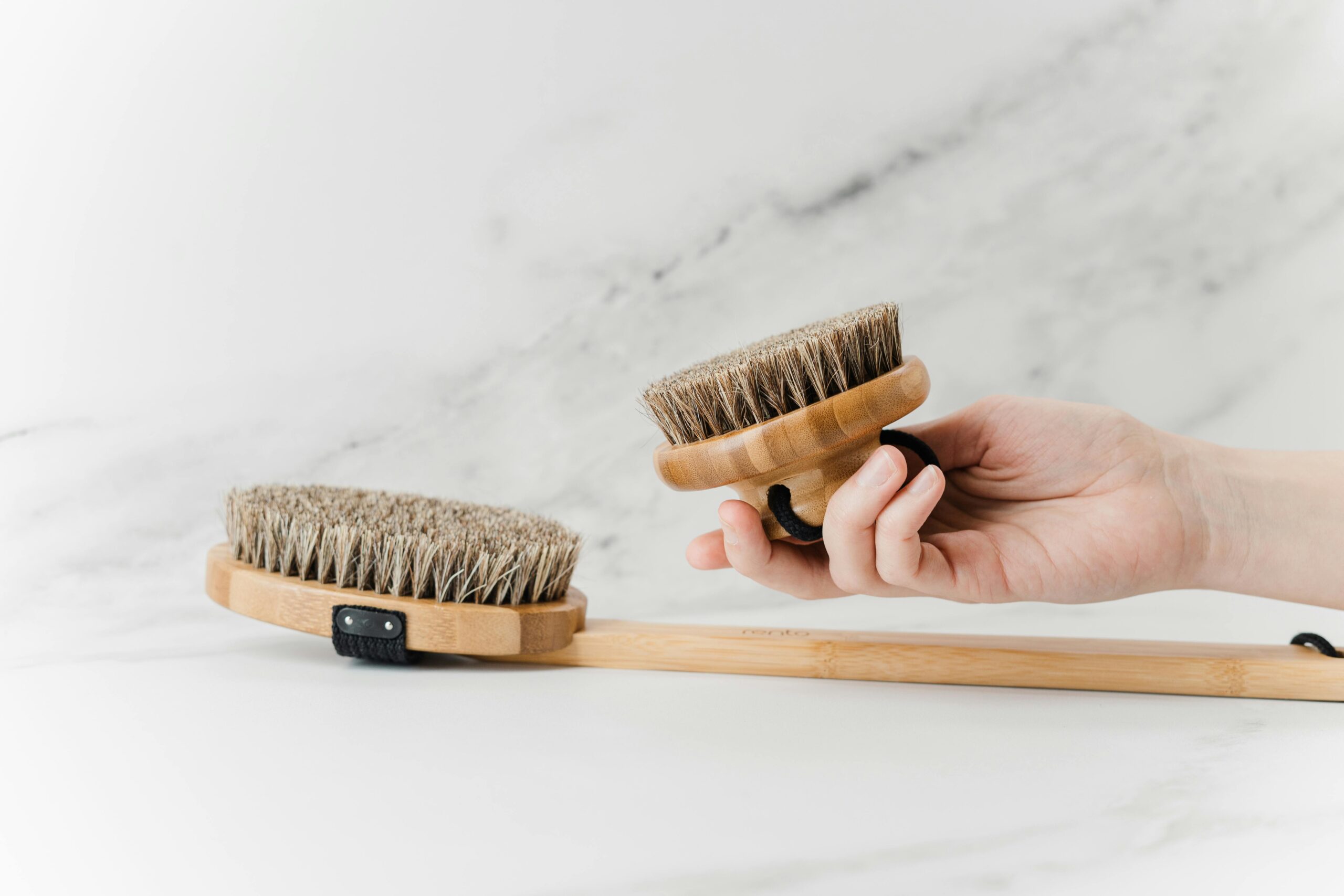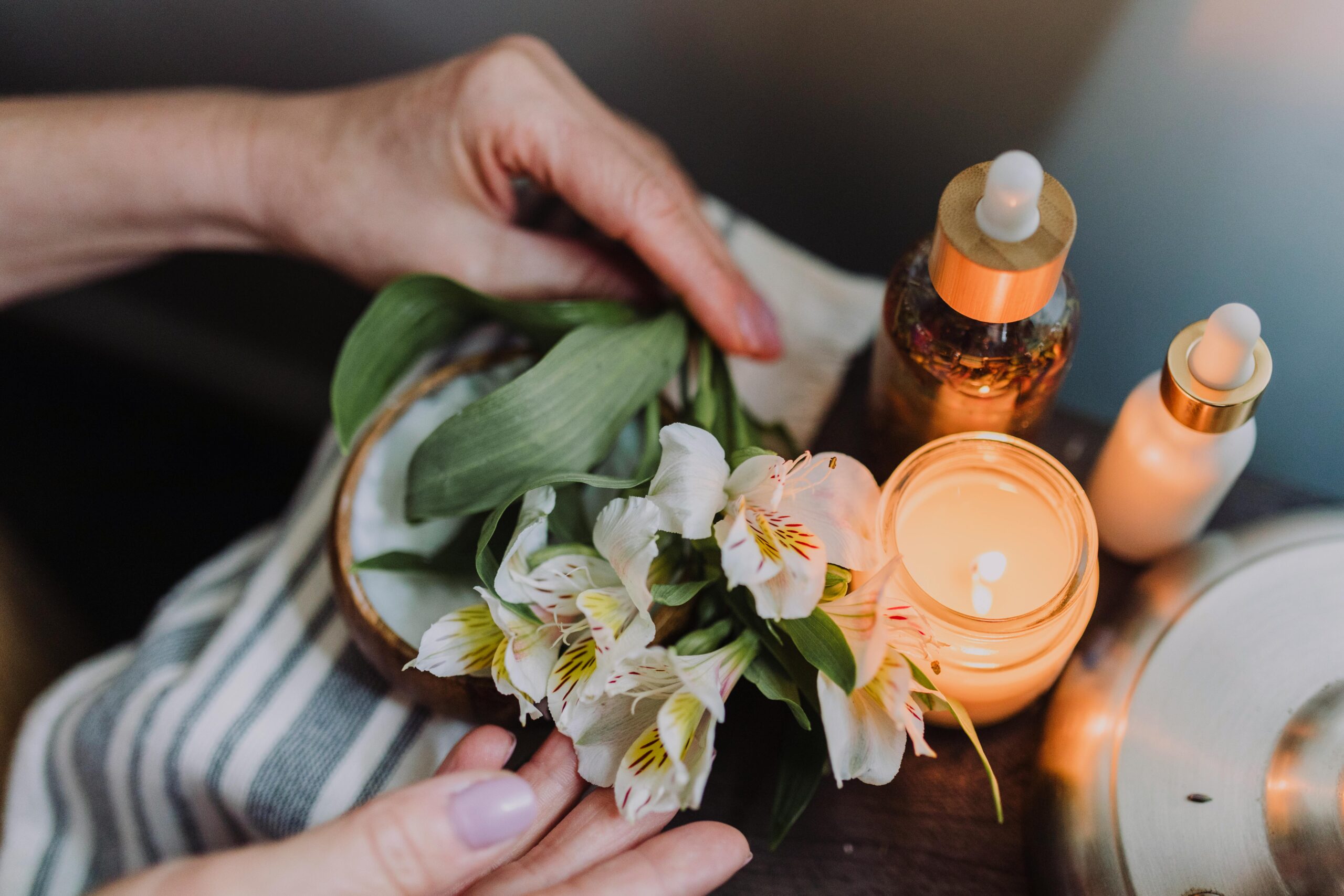In the world of natural health and wellness, dry brushing has gained significant popularity as a simple yet effective technique to promote healthy skin, improve circulation, and support the body’s detoxification processes. While dry brushing may seem like a beauty trend, it is rooted in ancient practices and is recognized for its myriad benefits, particularly for lymphatic health and glowing skin. This article delves deep into the benefits of dry brushing, how it supports lymphatic health, its impact on the skin, and how to incorporate it into your daily wellness routine.
What is Dry Brushing?
Dry brushing is a technique that involves brushing the skin with a natural bristle brush in a specific pattern, typically starting at the feet and working upwards toward the heart. The practice is done on dry skin, hence the name, and it is usually performed before showering. The brushing technique is gentle yet invigorating, and it can be done on various parts of the body, including the arms, legs, and torso.
The key principle behind dry brushing is the use of a brush with firm bristles to stimulate the skin and the body’s lymphatic system. But beyond that, dry brushing is not only a way to exfoliate the skin but also a means of improving circulation, enhancing detoxification, and reducing the appearance of cellulite.
How Does Dry Brushing Benefit Lymphatic Health?
The lymphatic system is a crucial part of the body’s immune system, responsible for filtering out toxins, waste, and other unwanted materials from the bloodstream. Unlike the circulatory system, the lymphatic system does not have a pump (like the heart), meaning it relies on movement, body muscles, and other activities to help it flow properly. This is where dry brushing comes into play.
1. Stimulating Lymphatic Flow
Dry brushing is known to stimulate the lymphatic system by increasing blood flow and encouraging the movement of lymphatic fluids. The lymphatic vessels are responsible for draining waste and toxins from the body, and the brushing technique helps to enhance this process. By stimulating lymph flow, dry brushing aids in the detoxification process, ensuring that the body can efficiently remove harmful substances.
By brushing in the direction of the lymph nodes (toward the heart), the movement helps push the lymphatic fluid through these vessels, encouraging better drainage. This can prevent the stagnation of toxins and improve the body’s ability to cleanse itself.
2. Promoting Detoxification
The lymphatic system plays a vital role in detoxifying the body by removing waste, bacteria, and toxins. Dry brushing helps promote the detoxification process by encouraging the movement of lymph fluid, which in turn speeds up the removal of toxins from the body. This makes it an excellent practice for individuals looking to support their body’s natural detox efforts.
A well-functioning lymphatic system is essential for maintaining a healthy immune system and reducing inflammation. By supporting the lymphatic flow, dry brushing can help improve overall health and prevent the buildup of harmful substances that may contribute to chronic illness or skin issues.
3. Reducing Water Retention
One of the side effects of poor lymphatic flow is water retention, which can lead to swelling and bloating. Dry brushing helps to stimulate the circulation of lymph fluid, which can reduce the buildup of fluids in tissues. Regular dry brushing encourages a balanced flow, preventing the stagnation that can lead to puffiness and edema, especially in the lower legs, abdomen, and arms.
The Skin Benefits of Dry Brushing
Beyond its impact on lymphatic health, dry brushing offers several skin benefits, making it a great addition to any skincare routine.
1. Exfoliating and Smoothing the Skin
One of the most immediate and noticeable benefits of dry brushing is its ability to exfoliate the skin. The stiff bristles of the brush remove dead skin cells, leaving the skin feeling soft, smooth, and refreshed. Regular exfoliation encourages the renewal of skin cells, promoting a healthier, more radiant complexion.
By removing the buildup of dead skin cells, dry brushing also allows moisturizers and serums to penetrate more effectively, improving the efficacy of your skincare products. This can lead to smoother, more hydrated skin over time.
2. Reducing the Appearance of Cellulite
While there is no magic cure for cellulite, dry brushing has been shown to help reduce its appearance. The brushing motion stimulates blood circulation and encourages the movement of lymphatic fluid, which can help break down the fat cells that contribute to the lumpy, dimpled appearance of cellulite.
Dry brushing works to smooth out the skin and reduce fluid retention, both of which can help minimize the visibility of cellulite. Although results may vary, consistent dry brushing is thought to improve skin texture and create a firmer, more even appearance over time.
3. Enhancing Skin Tone and Texture
Regular dry brushing promotes better circulation to the skin, which enhances the delivery of oxygen and nutrients to skin cells. This increased blood flow can help promote a healthy, glowing complexion, improve skin texture, and even out skin tone. Dry brushing can also reduce the appearance of redness, irritation, or dullness, leaving your skin looking fresher and more vibrant.
Additionally, by stimulating the production of collagen and elastin (the proteins responsible for skin elasticity), dry brushing may contribute to firmer, more youthful-looking skin.
4. Reducing Acne and Ingrown Hairs
Dry brushing helps to clear pores and prevent the buildup of dirt and oil that can lead to acne. By exfoliating the skin, it helps remove dead skin cells that can clog pores and lead to breakouts. This can be particularly helpful for individuals with body acne or acne-prone skin on the back, chest, or arms.
For those prone to ingrown hairs, dry brushing can help by clearing the pores and exfoliating the skin. The technique removes the buildup of dead skin cells that can trap hair follicles, preventing ingrown hairs and promoting smoother, clearer skin.
How to Dry Brush: A Step-by-Step Guide
To experience the full benefits of dry brushing, it’s essential to use the correct technique. Here is a simple step-by-step guide to get you started:
1. Choose the Right Brush
Select a natural bristle brush with firm yet gentle bristles. You can find specialized dry brushing brushes online or at natural health stores. The brush should feel firm but not painful on the skin. Brushes with a long handle can be helpful for reaching your back and lower legs.
2. Start with Clean, Dry Skin
Dry brushing is always done on dry skin, before showering or bathing. Stand in a comfortable area, such as your bathroom or bedroom, and make sure you have enough space to move freely.
3. Start at Your Feet and Work Upward
Begin brushing at the soles of your feet, using long, sweeping strokes toward your heart. This upward motion helps stimulate lymph flow. Work your way up the body, brushing each area for about 5 to 10 strokes. Focus on areas where you may experience fluid retention or cellulite, such as your thighs, abdomen, and arms.
- Legs: Start at your feet and brush upward, following the natural lines of your muscles. Use firm but gentle strokes.
- Arms: Brush from your hands up to your shoulders in long, sweeping strokes, focusing on areas where lymph nodes are concentrated.
- Back: If your brush has a long handle, use it to reach your back and shoulders, brushing in circular motions.
4. Be Gentle but Firm
Avoid using excessive pressure, as dry brushing should not be painful or cause redness. Be firm enough to stimulate circulation and exfoliate the skin but gentle enough to avoid irritation.
5. Focus on Lymph Node Areas
Lymph nodes are concentrated in certain areas of the body, including the groin, armpits, and neck. When brushing, direct your strokes toward these areas to encourage the flow of lymphatic fluid.
6. Shower Afterwards
After dry brushing, take a warm shower to wash away the dead skin cells and toxins that have been brought to the surface. Follow up with a natural moisturizer, such as coconut oil, shea butter, or aloe vera, to keep your skin hydrated and nourished.
Precautions and Considerations
While dry brushing has numerous benefits, it may not be suitable for everyone. Here are a few precautions to consider:
- Sensitive Skin: If you have sensitive skin or conditions like eczema or psoriasis, dry brushing may irritate your skin. Always start with gentle pressure and avoid areas with active flare-ups.
- Infections or Open Wounds: Avoid dry brushing over cuts, bruises, or any open wounds, as this could worsen irritation or introduce bacteria.
- Over-Brushing: Dry brushing should be done 2-3 times a week, not daily. Over-brushing can lead to skin irritation or dryness.
- Consult a Healthcare Provider: If you have any underlying medical conditions, such as lymphatic diseases, or if you’re pregnant, it’s best to consult a healthcare provider before starting dry brushing.
Conclusion: Embrace Dry Brushing for Radiant Health
Dry brushing is a simple, effective, and natural practice that offers a wide range of health benefits, from improving lymphatic flow to promoting smoother, healthier skin. By regularly incorporating dry brushing into your routine, you can support your body’s detoxification efforts, enhance circulation, reduce the appearance of cellulite, and enjoy a glowing complexion. It’s an easy addition to your self-care ritual that nurtures both your skin and overall well-being.
So, grab your natural bristle brush, take a few moments for yourself, and embrace the power of dry brushing




